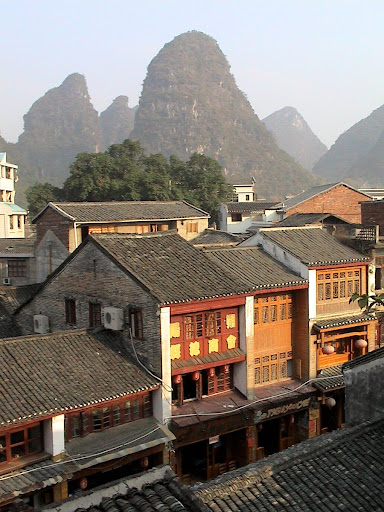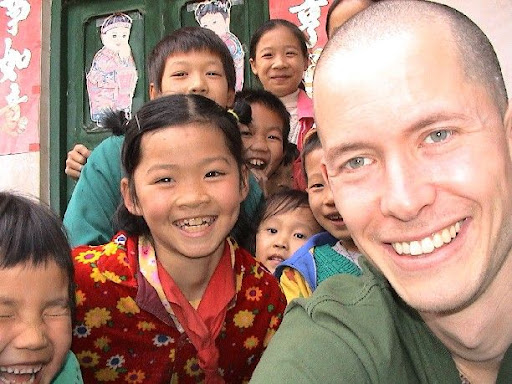Hidden Treasures: Grease Stains in China’s Fairy Tale Landscape
My first thought upon arriving in Yangshuo was: this place reminds me of the Smurfs. Yes, an ancient Chinese landscape brought to mind a long-dormant memory of a 1980s Saturday morning cartoon.
Tucked away in southern China’s Guanxi Province, Yangshuo’s fairy tale terrain has been the subject of Chinese art since before the time of Christ. Upon first glance—and maybe upon the next hundred glances too—the landscape seems surreal, even ancient and wise. It is not at all like the youthful Himalayas of Tibet, where dumbfounding heights taunt those who like a challenge. These hills call instead for one’s quiet wonder, and they call for stillness.
After eating breakfast, this was my morning routine in Yangshuo: walk to the Li River, sit along its rocky bank, and be still. In my stillness, I would read a book, write in my journal, or simply look around. Yangshuo, at least beside the river, felt remote, making it difficult to imagine that tens of thousands of visitors—including former presidents Carter and Clinton—have visited these same hills.
To truly explore an area, however, one should do more than just sit (though sitting observantly is an important—and often neglected—means of exploring a place). And so it was on a bicycle, available for rent from my guesthouse for only $1, that over a three-day period I made forays deep into the countryside, covering some 60 miles. On the bike it didn’t take long to leave the tourist-saturated streets with their shops and restaurants, one of which was charmingly called “Minnie Mao’s”, firmly behind. Passing through villages, I looked out at fields and livestock, simple houses and smiling people, and, of course, at the phenomenal scenery.
In the previous month my travels had kept me in the enormity of several Chinese cities—Beijing, Shanghai, Guangzhou, and Hong Kong—and I had grown weary of the traffic, smog, seething crowds, and my own aloneness. But now that I was twisting and turning down dirt roads in the countryside I felt refreshed. I also realized that the one-dimensional view of China I had been developing was undergoing a correction. Until this week I had only experienced urban China. Most Chinese, however, live in rural communities, where life is very different. Shanghai may by the country’s showcase city, but visiting there tells you little about how most of the country actually lives.
When it came time to leave Yangshuo, I saw that more than my understanding of China had changed; so had my jeans. The one-dollar-a-day bike didn’t come with a chain guard, and grease had been rubbed deep into the cuffs.
The jeans—my only pair—were what I would be wearing for the rest of the year as I completed my travels through Asia, and at first I was bothered by the unsightly marks. Then I decided on a change of perspective: the stains would be a souvenir, reminding me every time I tied my shoes of one of China’s best kept semi-secrets, the fairy tale landscape of Yangshuo.

Joel Carillet, chief editor of wanderingeducators.com, is a freelance writer and photographer based in Tennessee. His most recent project is 30 Reasons to Travel: Photographs and Reflections from Southeast Asia, due for release in August.

-

- Log in to post comments




















